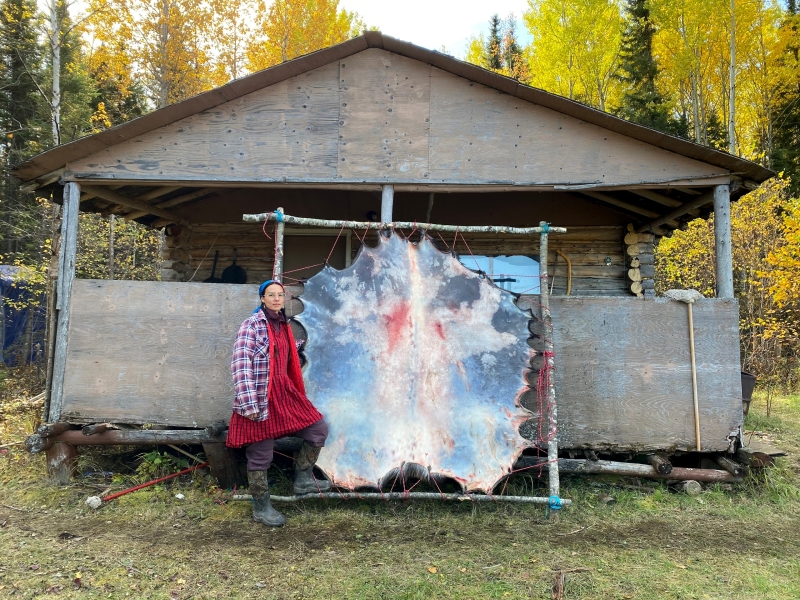
We may earn a commission if you buy something from any affiliate links on our site.
Growing up in Utqiagvik, Alaska, Inupiaq fashion designer Bobby Itta remembers being surrounded by hides, fur pelts, and seal skins at her house. “My aaka [grandmother] Emily was a master seamstress, and my grandpa was a trapper,” says Itta, now based in Anchorage. “He would have fox furs along the walls to clothe him, his wife, and children—or he would sell them to make money to feed the family.”
Given her upbringing, it’s no surprise that Itta is now a garment maker herself. Through her label, Arctic Luxe, Itta creates traditional handmade parkas (called atigis) trimmed with fox and wolverine furs or spotted-seal skins. Her designs reflect the Indigenous teachings she was brought up with, which include using every part of an animal—whether it’s the meat for substance or the fur for warmth and style. “We’ve always been really sustainable with everything that we hunt,” says Itta. “Seal is a big part of our diet. As a young adult, my aunt showed me how to skin the seal and cut the meat. If we’re cooking it, we’re using pretty much all of it—we even make a delicacy with the intestines.”
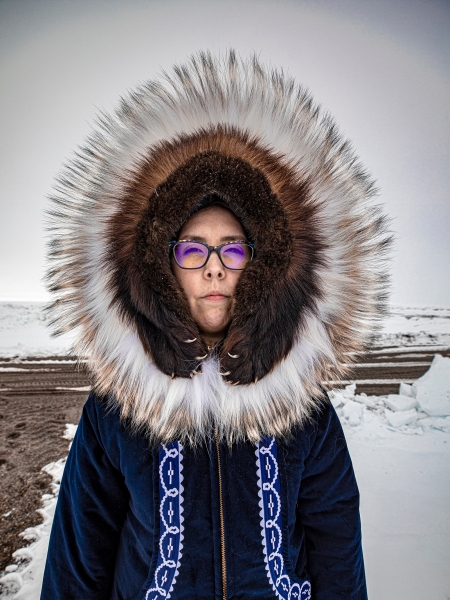

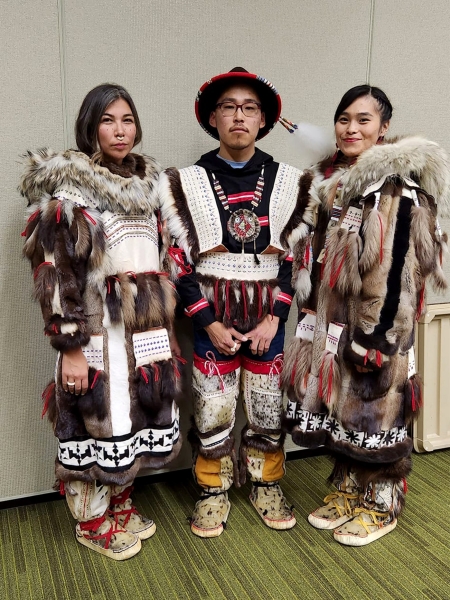
It’s not just Itta who’s taking a more holistic approach to incorporating furs and skins into her fashions. In the Indigenous community at large, many contemporary artists favor this sustainable design ethos, ensuring that any animals hunted for their skins are also being used for food and other cultural purposes. “Fur has always been a part of our lives, whether financially for our livelihood or keeping us alive in the cold winter months,” says Meagan Anishinabie, an Anishininew artist from Sandy Lake First Nation in Canada who is now based in Wawota, Saskatchewan. Anishinabie creates all her handmade, beaded mukluks, earrings, mittens, and hats out of hides or furs that she often traps and tans herself. “We’ll often disperse the meat to our family or anyone else who needs it,” says Anishinabie.
These artists’ fur designs may be strikingly beautiful, but how they source and utilize their materials points to a centuries-old practice that extends far beyond fashion. Indigenous artists hunt animals not only for fur but also for sustenance and survival, a distinctive approach that differs from the rest of the current industry.
Colliding worlds
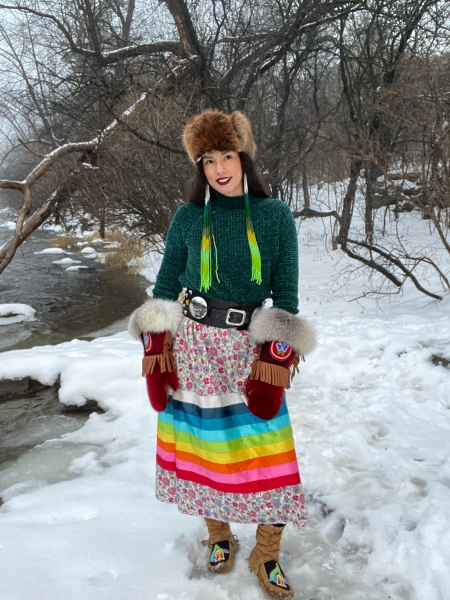
Despite this clear intention behind Indigenous hunting practices, the use of real fur remains a highly controversial subject. To many, killing animals for fur is seen as cruel and outdated. In the global mainstream industry, many fashion brands are now going fur-free as a result. Top luxury brands such as Versace, Balenciaga, Gucci, and more have all banned the use of fur in their ateliers. Major retailers such as Saks Fifth Avenue have also shuttered their fur salons. The momentum toward banishing furs has even spread to a state level: Last year California made selling fur illegal. “The animal-fur industry is definitely in decline,” says Sydney Gladman, a chief scientific officer at Material Innovation Initiative, which develops research around textiles (including real and faux furs) and their impact on the planet.
Today, much of the industry is shifting to faux furs, which come with their own set of environmental implications. For one, faux furs are hardly a great material for the planet; many are made from polyester or acrylic fibers that do not biodegrade over time. “They’re plastics and can shed their microfibers,” says Gladman. “There’s a lot of long-term [studies] on how microplastics are starting to affect humans, the environment, animals, and our ecology.” While there have been advancements toward more eco-friendly faux—Gladman points to companies like Ecopel, which creates a bio-based faux fur made of Sorona fibers, or BioFluff, a plant-based faux fur—they’re still far from being the industry norm.
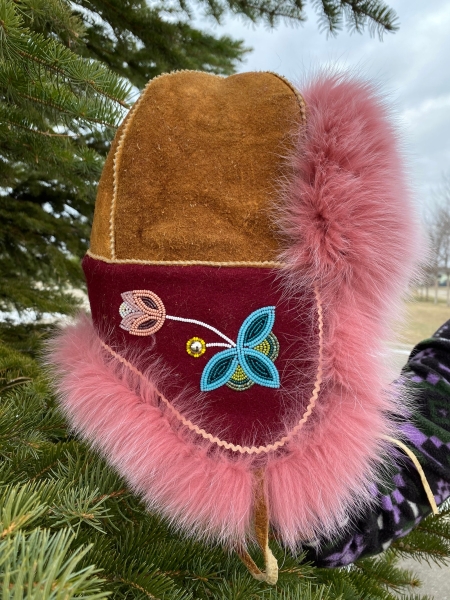
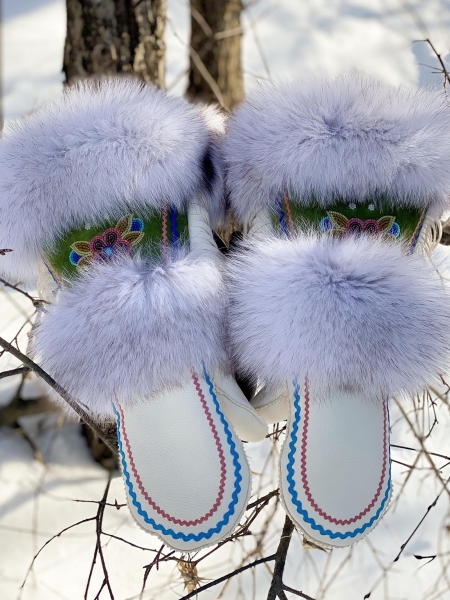
Real furs in fashion haven’t been eradicated yet, either. Just this past fall 2024 season, high-fashion labels such as Luar, LaQuan Smith, and Bally all showed fur on the runways. To many this was a surprise, given that commercial fur farms—which many larger fashion brands use to source their pelts—have a significant environmental footprint. According to the Fur Free Alliance, more than 100 million animals continue to be farmed for fur on a broad level. A 2011 study from CE Delft found that the production of one kilogram of mink fur results in approximately 110 kilograms of carbon-dioxide equivalent—similar to the emissions of a car driving more than 775 miles.
It seems, then, that fashion is at a crossroads, with the production of both real and faux fur adversely impacting our planet. But given how Indigenous artists source fur—often hunting, cleaning, and treating it themselves in small quantities, in addition to utilizing the rest of the animal—those communities have a much smaller impact. “Indigenous peoples are not contributing large percentages to the production volumes for the global market,” says Gladman. In fact, the Indigenous approach to eliminating waste and designing with purpose can even act as an industry guide toward a more circular future.
Intentional designs
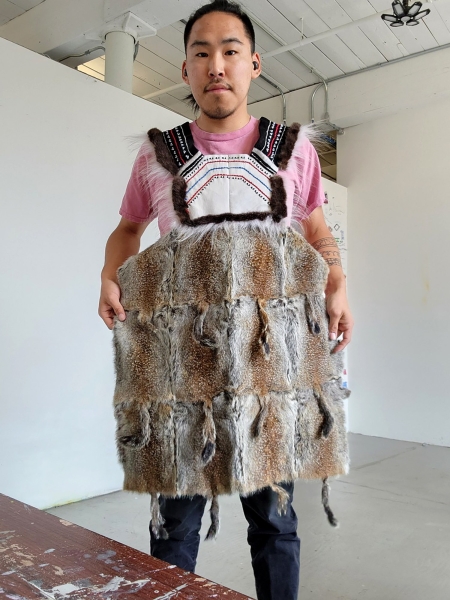
Whereas large-scale fur farms procure mass quantities of pelts (sometimes through inhumane killing methods, where the meat and other parts of the animal are often wasted), Indigenous artists hunt in much smaller quantities, and they take a zero-waste approach to their final designs. “They’re using fur for luxury, but we as Indigenous people use fur to respect the animal,” says Golga Oscar, a Yup’ik artist based in Bethel, Alaska.
Oscar is known for his headdresses (nasqerrun), parkas, and moccasins, among other traditional garments, made out of furs such as wolf, beaver, muskrat, or ground squirrel. During Oscar’s design process, he will intentionally think of ways to honor and respect the animal from which he’s drawing materials. “We think of ways to best represent the animal and have a strong spiritual connection with them,” he says. “If we were to use wolverine fur, part of our tradition is that we have to color it in red ochre because wolverines are a sacred animal. It has to be honored in that way.”
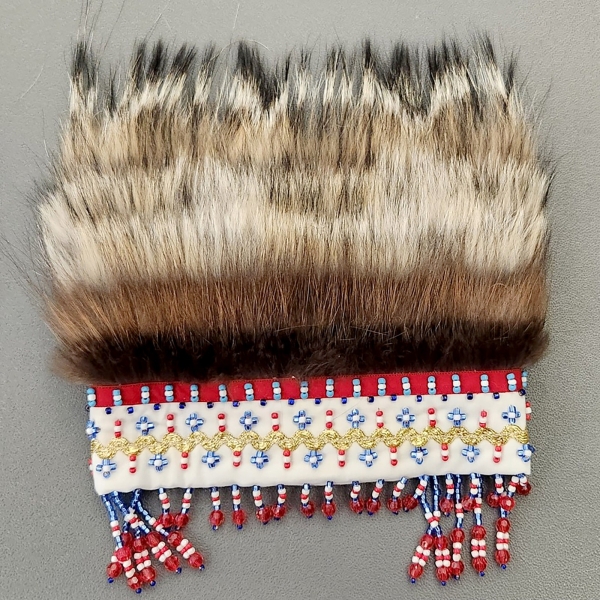
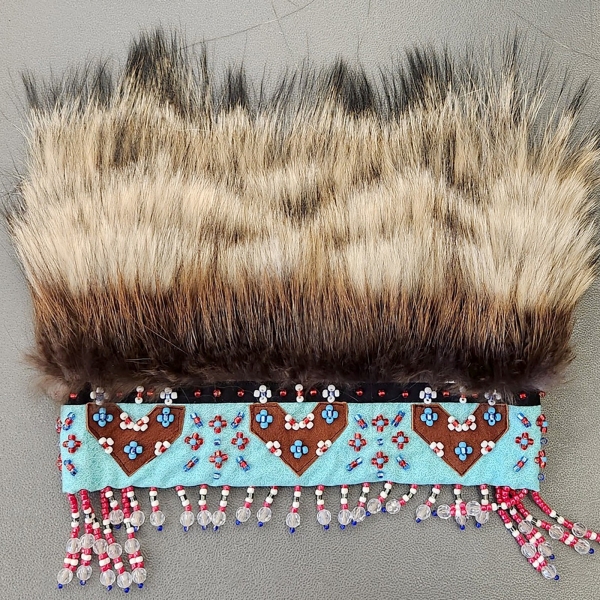
Currently, Oscar is working on designing traditional parkas made of ground squirrels, and those furs all come from local trappers in Alaska who also supply meat to surrounding communities. “Every time a person hunts squirrels, they [typically] skin it, dry the meat, and store it in the freezer for the upcoming winter,” says Oscar. “They can accumulate over 6,200 ground squirrels [in a season], and if their freezers are full, they’ll provide it to the elders in the community.” Oscar will also find ways to use the scraps from his materials, such as squirrel tails for decorative trim.
In many Indigenous communities, hunting is also essential for food security. “It’s a challenge to make outsiders understand how rural Indigenous artists live, especially when it comes to hunting and gathering,” says Oscar. “The wage is pretty low in [Alaskan] villages, and jobs are scarce, so it’s really challenging for the younger generation to even buy food from the stores.”
Anishinabie echoes the sentiment of her own Sandy Lake First Nation community. “Where I’m from, the cost of living and food is so high,” she says. “[People] depend on wild game, whether it’s moose, rabbits, or fish.” The artist also maintains that, in some cases, hunting animals can benefit their local ecologies. “That’s how you keep the [animal] populations healthy,” she says. “You’re able to control it.”
Climate hurdles
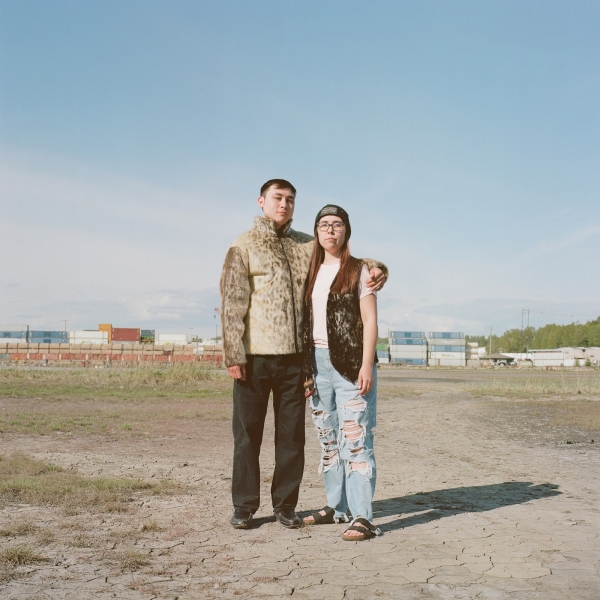
Climate change is currently threatening traditional Indigenous ways of life in many parts of the world. Alaska is warming at twice the rate of the rest of the country and experiencing a shrinking of its ice coverage, while California is grappling with dwindling water reserves.
As our planet heats up, it’s becoming increasingly difficult for Indigenous hunters to find and source their prey—thus making it more challenging for Indigenous artists to practice using their traditional materials and craftwork techniques. Oscar has seen this occur firsthand. “During the summer, there are certain days where most of our sea mammals die off due to extreme warm heat,” he says. “One year a lot of coastal people found seal carcasses along the beach and the salmon run was affected. It’s getting harder for us to find certain seals or belugas.”
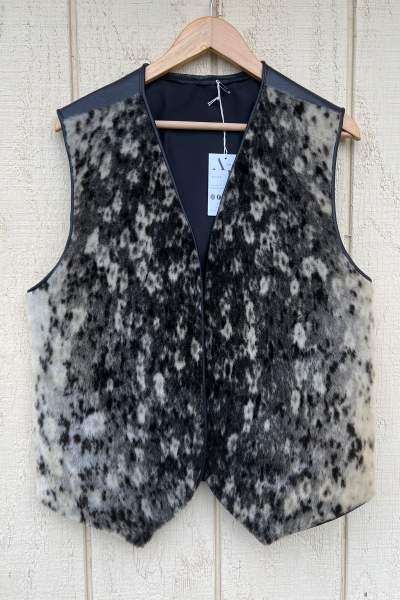
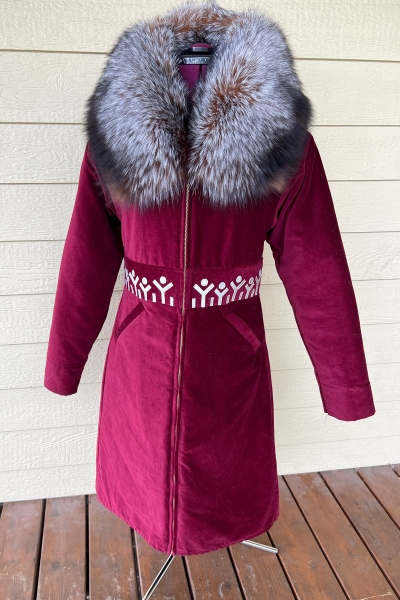
In the state, Itta has found it increasingly difficult to source her seal skins. “[Seal skin] is so hard to get, and it’s really expensive,” says Itta. “A seal pelt—for about a five-by-three-foot pelt—runs for about a thousand dollars in the United States. Our seal population is only a few hundred thousand, and you have to be a quarter Alaskan Native to hunt them and turn them into a product,” she adds.
As a result, Itta often relies on finding pelts herself or through her network of hunters in the area, sometimes happening upon them organically. “During COVID, there was a big storm that washed up like 30 or 40 seals on the beach,” says Itta. “My whole life living here, I’ve never heard of anything like that happening. My dad called me and said, ‘You need to go to the beach right now!’” Itta ended up using those seal skins for a parka that was recently displayed at the Museum of International Folk Art in Santa Fe.
Despite these increasing environmental hurdles, however, Indigenous artists like Itta, Oscar, and Anishinabie continue to innovate with their distinctive designs, employing the furs they thoughtfully and carefully procure. Through their one-of-a-kind fur garments or accessories, the Indigenous community continues to utilize natural materials and create pieces that are built to last—a stark contrast to the fashion industry’s tendency to overproduce. “What we make isn’t fast fashion,” says Anishinabie. “These items will last generations. They hold their value.”
For Itta, the design process for her fur creations also holds a more personal and poignant cultural meaning. “Doing traditional [designs] is like medicine—it’s healing to me,” says Itta. “It makes me feel connected to my people and our traditions. It shows the world that we’re still here, we’re still doing this, and we’re going to continue doing this. No matter what.”

